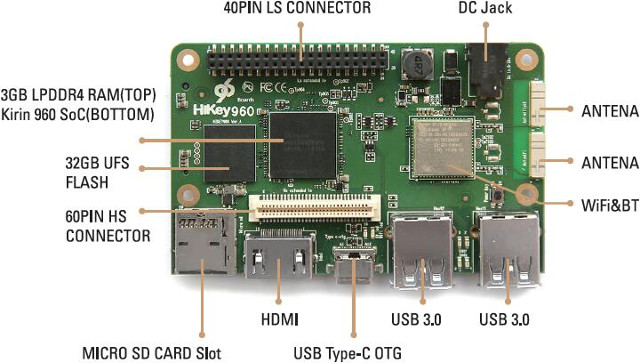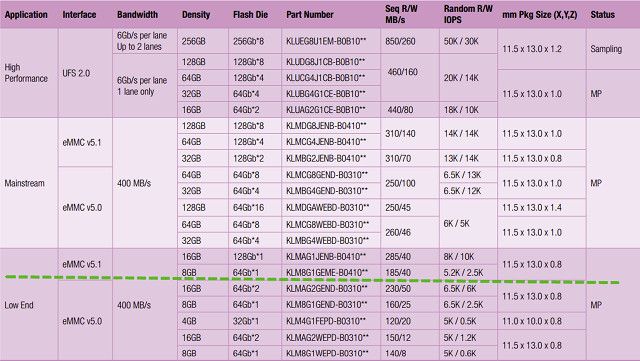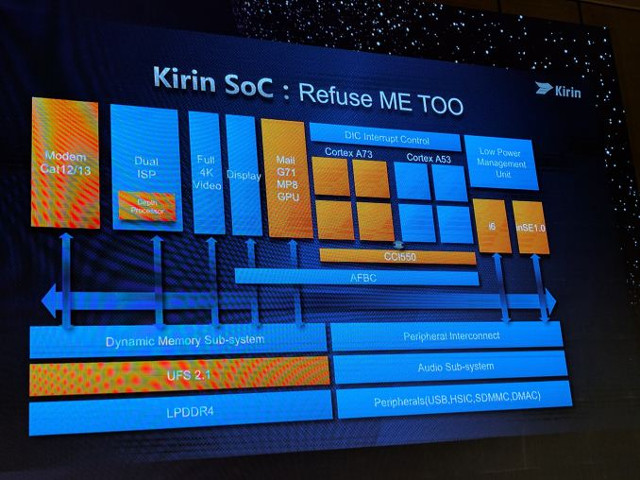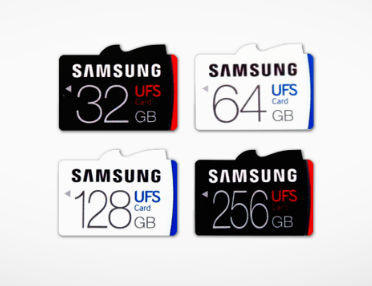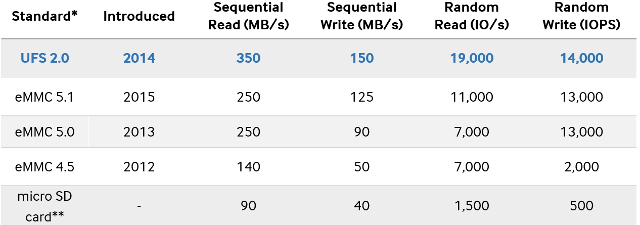Samsung has finally launched their latest Galaxy S8 and S8+ smartphones powered by Qualcomm Snapdragon 835 or Exynos 8895 processor, 5.8″ and 6.2″ screens , and some of the most interesting features include the “infinity screen” with ultra thin bezels, Samsung DeX allowing for a desktop experience on a large monitor when the phone is docked, as well as Bixby assistant. Samsung Galaxy S8/S8+ specifications: SoC (one or the other depending on markets) Qualcomm Snapdragon 835 octa-core processor with four Kryo 280 cores @ 2.3 GHz, four Kryo 280 cores @ 1.7 Ghz;; Adreno 540 GPU; 10nm process Samsung Exynos 8895 octa-core processor with four M2+ cores @ 2.35 GHz, four Cortex A53 cores @ 1.9 GHz, ARM Mali-G71 GPU; 10nm process System Memory – 4GB LPDDR4 Storage – 64GB UFS 2.0 flash; micro SD up to 256 GB Display Galaxy S8 – 5.8” quad HD+ (2960×1440), (570ppi) Galaxy S8+ […]
HiKey 960 Development Board Powered by Hisilicon Kirin 960 Cortex A73/A53 Processor To Sell for $239
LeMaker is about to launch a successor to Hikey board with a new 96Boards compliant development board with HiKey 960 featuring the powerful Hisilicon Kirin 960 processor found in Huawei Mate 9 smartphone, as well as 3GB LPDDR4 memory, 32GB UFS storage, HDMI, USB 3.0 ports and so on. Hikey 960 board specifications: SoC – Kirin 960 octa-core big.LITTLE processor with 4x ARM Cortex A73 cores @ up to 2.4 GHz, 4x Cortex A53 cores @ up to 1.8 GHz, and a Mali-G71 MP8 GPU System Memory – 3GB LPDDR4 SDRAM Storage – 32GB UFS flash storage + micro SD card slot Video Output / Display Interface – 1 x HDMI 1.4 up to 1080p, 1x 4-lane MIPI DSI connector Connectivity – Dual band 802.11 b/g/n/ac? WiFi and Bluetooth 4.1 with two antennas USB – 2 x USB 3.0 type A host ports, 1x USB 2.0 type C OTG port […]
Samsung eMMC and UFS 2.0 embedded Flash Chips and Performance in 2016
Samsung does not always keep up its website up-to-date when it comes to its embedded flash chips, and performance metrics such as sequential read/write and random read/write values are not shown for all devices. The former is mostly important for data storage, while the latter may make a big difference for the operating systems responsiveness, and applications that rely on many short write and/or read operations. A table with the latest Samsung eMMC 5.0/5.1 and UFS 2.0 chips, and performance metrics somehow dropped in my computer. The company offers low end eMMC 5.0/5.1 flash with capacities between 4 and 16 GB with performance up to 285/40 R/W MB/s and 8K/10K R/W IOPS, mainstream chips between 32 and 128 GB delivery up to 310/140 MB/s and 14K IOPS, and all UFS 2.0 device are faster than any of the eMMC flash (limited in theory to 400 MB/s) with capacity between 16GB […]
HiSilicon Kirin 960 Octa Core Application Processor Features ARM Cortex A73 & A53 Cores, Mali G71 MP8 GPU
Following on Kirin 950 processor found in Huawei Mate 8, P9, P9 Max & Honor 8 smartphones, Hisilicon has now unveiled Kirin 960 octa-core processor with four ARM Cortex A73 cores, four Cortex A53 low power cores, a Mali G71 MP8 GPU, and an LTE Cat.12 modem. The table below from Anandtech compares features and specifications of Kirin 950 against the new Kirin 960 processor. SoC Kirin 950 Kirin 960 CPU 4x Cortex A72 (2.3 GHz) 4x Cortex A53 (1.8 GHz) 4x Cortex A73 (2.4 GHz) 4x Cortex A53 (1.8 GHz) Memory Controller LPDDR3-933 or LPDDR4-1333 (hybrid controller) LPDDR4-1800 GPU ARM Mali-T880MP4 @ 900 MHz ARM Mali-G71MP8 @ 900 MHz Interconnect ARM CCI-400 ARM CCI-550 Encode/ Decode 1080p H.264 Decode & Encode2160p30 HEVC Decode 2160p30 HEVC & H.264 Decode & Encode2160p60 HEVC Decode Camera/ISP Dual 14bit ISP 940MP/s Improved Dual 14bit ISP Sensor Hub i5 i6 Storage eMMC 5.0 UFS 2.1 Integrated Modem […]
Samsung UFS micro SD Card Alternatives Promise High Sequential and Random I/O Performance
UFS (Universal Flash Storage) chips are now commonly found in premium smartphones, but the UFS standard has also been published for removable cards, and Samsung has just introduced their first cards based on UFS 1.0 Card Extension Standard* for use in high-resolution mobile shooting devices such as DSLRs, 3D VR cameras, action cams and drones, as a new alternative to micro SD cards. Before getting into more details about the Samsung card, let’s go through the main features defined by UFS card specifications: Based on the UFS 2.0 standard and compatible with the UFS HCI 2.0 standard Supports MIPI M-PHY HS-Gear3, HS-Gear2 (optional), and PWM-Gear1 A detailed mechanical definition is defined by the JEDEC MO-320 outline Features common to embedded UFS 2.0 devices: Support for multiple logical units, each with configurable characteristics Reliable write and background operations Secure operations such as purge and erase to enhance data security Includes write […]
Samsung Galaxy S6 and S6 Edge Octa-core Smartphones Support Two Wireless Charging Protocols and UFS 2.0 Flash
Samsung Electronics announced Galaxy S6 and Galaxy S6 Edge smartphones at Mobile World Congress 2015 during their “Unpacked” event. Both features Exynos 7420 octa-core SoC with 64-bit ARM cores, and 5.1″ display, bit the Galaxy S6 Edge display is curved on both sides. Galaxy S6 & S6 Edge specifications: SoC – Samsung Exynos 7 Octa (Exynos 7420) octa core processor with four Cortex A57 core @ 2.1GHz + four Cortex A53 cores @ 1.5Ghz, and Mali-T760 MP8 GPU, manufactured using 14nm process. System Memory – 3GB LPDDR4 Storage – 32, 64 or 128GB UFS 2.0 flash. Display Galaxy S6 – 5.1’’ Quad HD(2560×1440) 577ppi, Super AMOLED. Gorilla Glass 4. Galaxy S6 Edge – 5.1’’ Quad HD(2560×1440) 577ppi, Super AMOLED, Dual edge. Gorilla Glass 4. Camera 16MP OIS(rear), 5MP (front). Features: Quick Launch (0.7s by pressing the home button twice), Tracking AF, Auto Real-time HDR(Front & Rear) , F1.9, Low Light Video(Front […]
Samsung Introduces Faster Full-Duplex UFS 2.0 Storage for Mobile Devices
eMMC (embedded multimedia card) provides a boost in read and write performance compared to traditional NAND flash memories, let alone micro SD cards. Samsung has now announced the manufacturing of the first 32, 64, and 128GB embedded memory solution based on Universal Flash Storage (UFS) 2.0 standard delivering up to 350MB/s read speed and 150MB/s write speed, or 40% improvement in read speed over eMMC 5.1.This should help further reduce boot time, and app loading times. Moreover, while eMMC read and write operating are sequential (half-duplex), UFS 2.0 allows for full-duplex operating, meaning writing and reading can happen at the same time. UFS can achieve this feat thanks to a LVDS (Low-Voltage Differential Signaling) serial interface with dedicated read/write paths contrary to the parallel 8-bit interface used for eMMC. Combined with a Command Queue(CQ), which sorts out the commands that needs to be carried out, UFS 2.0 allows three times […]



